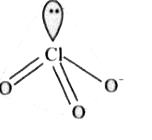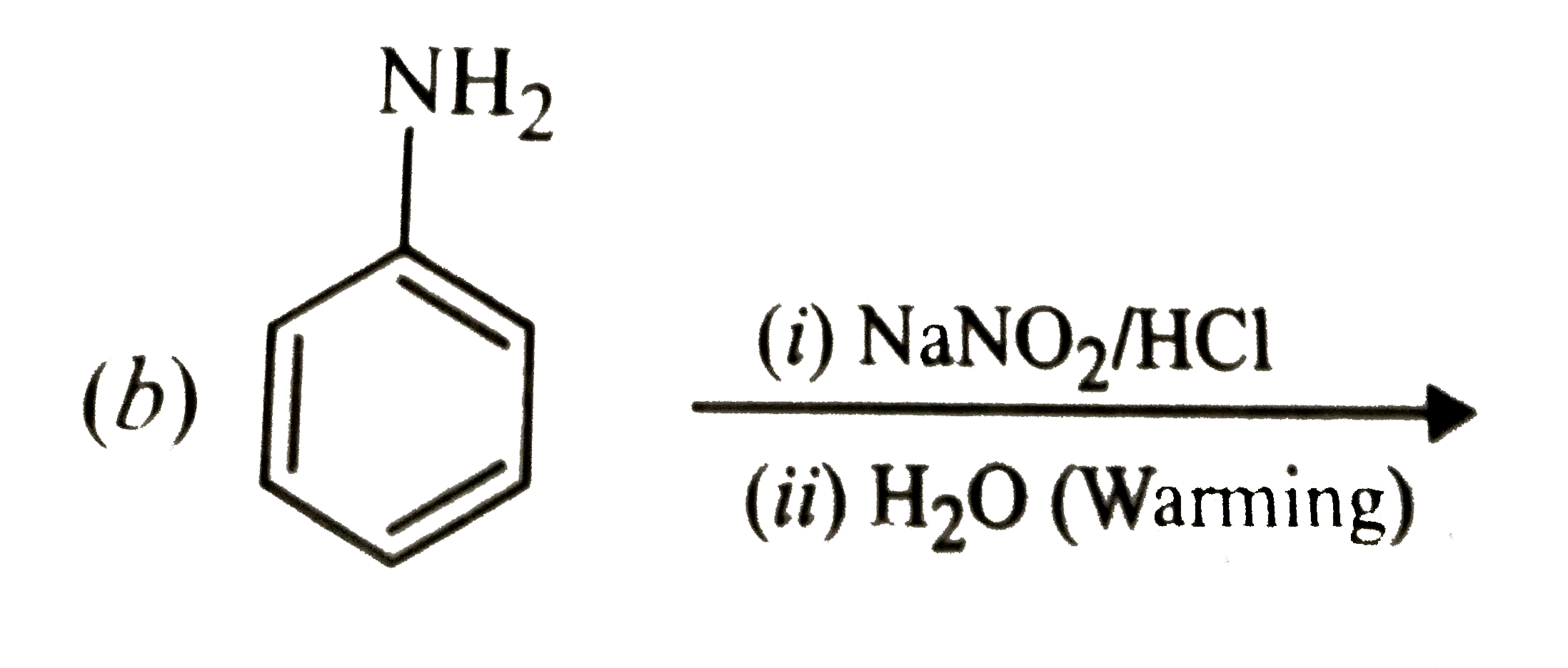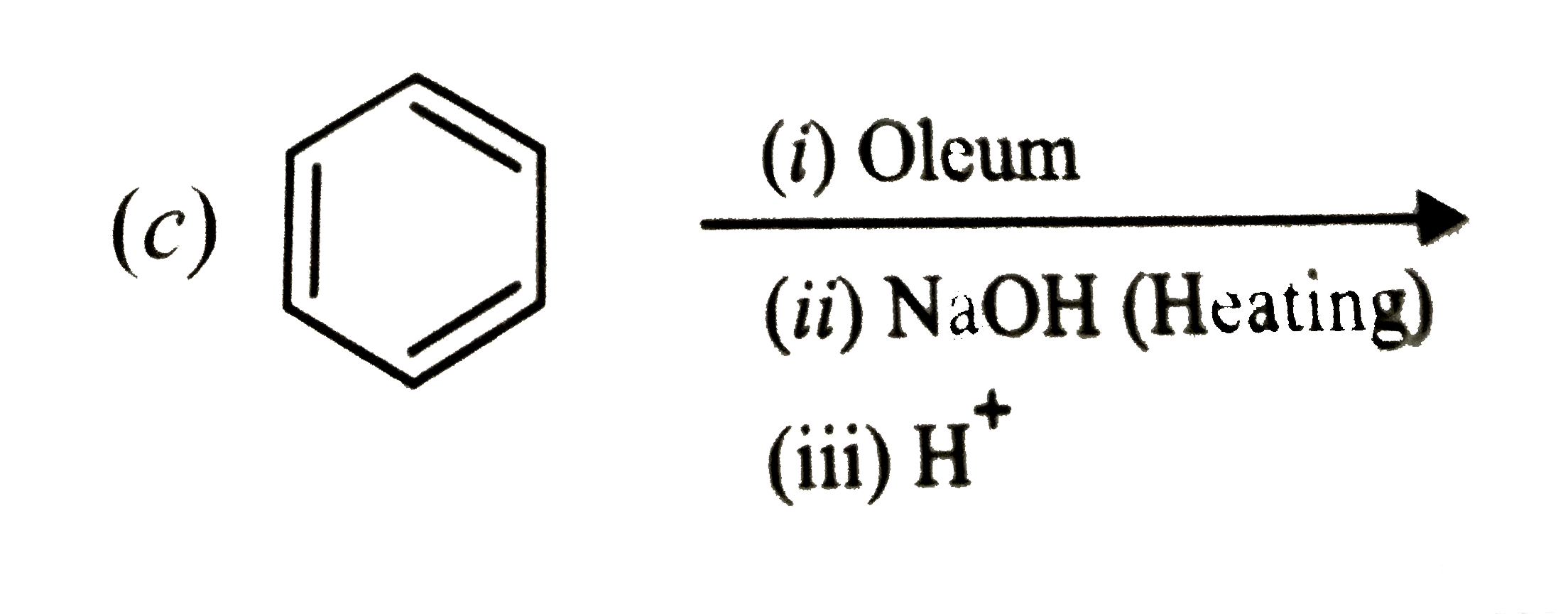Explore topic-wise InterviewSolutions in .
This section includes InterviewSolutions, each offering curated multiple-choice questions to sharpen your knowledge and support exam preparation. Choose a topic below to get started.
| 21351. |
Urea upon hydrolysis yields |
|
Answer» Acetamide 
|
|
| 21353. |
Which is not true covalent oxide of iodine |
|
Answer» `I_(4) O_(9)` |
|
| 21354. |
Which functional group is present in polyester ? |
|
Answer» `-COO-` |
|
| 21355. |
Which of the following is not a consequence of the Lanthanoid contraction? |
|
Answer» 5d series elements have a higher `IE_(1)` than 3d or 4d series |
|
| 21356. |
Which of the following diagram is correctly related to extraction of pb from galena? |
|
Answer» Galena `overset("forth floation") rarr ORE overset("Roasting ") underset("with air")rarr` |
|
| 21357. |
The solubility order for alkali metal fluoride in water is : |
|
Answer» `LiF LT RbF lt KF lt NaF` |
|
| 21358. |
Two oxides of a metal contains 50% and 40% of a metal respectively .The formula of the first oxide is MO. Then the formula of the second oxide is :- |
|
Answer» `MO_(2)` |
|
| 21359. |
Which of the following will not undergo Hell-Volhard Zelinsky (HVZ) reaction ? |
|
Answer» HCOOH |
|
| 21360. |
Which one of the following statements is incorrect ? |
|
Answer» SPECIFIC conductivity decreaseswith dilution ,. |
|
| 21361. |
Which of the following reactions will yield phenol? |
|
Answer»
|
|
| 21362. |
The true statement about the following conformation is : |
|
Answer» It has maximum angle strain. |
|
| 21363. |
Which of the following elements is present as the impurity to the maximum extent in the pig iron? |
|
Answer» MANGANESE |
|
| 21364. |
What happens when acetyl chloride is treated with ethanol? |
|
Answer» Solution :`underset("acetyl CHLORIDE")(CH_3 - undersetoverset(||)(O)(C ) -Cl) + underset("ETHYL alcohol")(C_2H_5) to underset("ethyl ACETATE")(CH_3 - undersetoverset(||)(O)(C ) - O C_2H_5) + HCL` This reaction is also known as alcoholysis. |
|
| 21365. |
Which of the following is a feature of adiabatic expansion? |
|
Answer» `DeltaVlt0` |
|
| 21366. |
Which of the following does not give oxygen on heating? |
|
Answer» `K_2Cr_2O_7` |
|
| 21367. |
The solubility of silver chromate in 0.01 M K_(2)CrO_(4) is 2 xx 10^(-8) mol m^(-3). The solublity product of silver chromate will be |
|
Answer» `8 xx 10^(-24)` `{:(Ag_(2)CrO_(4),hArr,2Ag^(+)+,CrO_(4)^(2-)),(S,,2S,S+0.1):}` `K_(SP) = [Ag^(+)][CrO_(4)^(2-)]` `K_(sp) = (2S)^(2)(S + 0.01) rArr 4S^(2) [S + 0.01]` ? `K_(sp) = 4[2 xx 10^(-8)]^(2) xx 0.01 [[2 xx 10^(-8)]^(2) lt lt 0.01]` `K_(sp) = 4 xx 4 xx 0.01 xx 10^(-16), K_(sp) = 16 xx 10^(-18)` |
|
| 21368. |
Which of the following elements forms p_(pi)-p_(pi) bond with itself? |
|
Answer» N |
|
| 21369. |
Which of the following shows optical activity ? |
|
Answer» Trans-`[CO(NH_3)_4CI_2]^+` |
|
| 21370. |
Which is a stronger oxidising agent Cr^2+orFe^(2+) Why? |
| Answer» Solution :`Cr^(2+)` is a stronger oxidising agent. Outer electronic configuration of `Cr^(2+)` is `3d^4`When it; acts as a reducing agent it GETS oxidised to `C^(2+)` having `3d^3` configuration. But in the case of `Fe^(2+)` ,its outer configuration changes from `3d^6` to `3d^5` .In a medium like water,CON figuration is more-stable because all the electrons are in lowering level. So `Cr^(2+)` has a greater tendency for REDUCTION and it gets converted more readily to `Cr^(3+)`. | |
| 21372. |
When 5mL of a 1.0M HCl solution is mixed with 5mL of a 0.1M NaOH solution, temperature of solution increases by t^(@)C. Which of the following(s) can be predicted from this observation |
|
Answer» If `5mL` of `0.1M HCl` is MIXED with `5mL 0.1M NH_(3)` solution, the temperature rise will be less than `t^(@)C` Reaction proceeds by limiting REAGENT only. ENTHALPY of neutralization decreases, when acid or base or both are weak: |
|
| 21373. |
When atoms are placed at the corners of all 12 edges of a cube, the number of atoms present per unit cell is : |
|
Answer» 1 |
|
| 21374. |
Which of the following is more volatile ? |
|
Answer» He |
|
| 21375. |
Which of the following processes results in the formation of a new compound? |
|
Answer» DISSOLVING common SALT in water |
|
| 21376. |
Write the reactions of F_2 and Cl_2 with water. |
|
Answer» SOLUTION :Fluorine vigorously reacts with water and oxidises water to `O_(2)` `2H_(2)O + 2F_(2) to 4HF + O_(2)` Chlorine dissolves in water to form hypochlorous acid which upon standing LIBERATES nascent oxygen and shows bleaching action. `Cl_(2)+ H_(2)O to underset(HCl + [O])underset(darr)(HClO + HCl)` Nascent oxygen Coloured substances + [O] `to` colourless |
|
| 21377. |
Which of the following is an acidic salt? |
|
Answer» `NaH_2PO_2` |
|
| 21378. |
The time required for 100% completion of a zero order reaction is |
|
Answer» ak `t_("completion")=([A]_(0))/(K)=(a)/(k)` |
|
| 21379. |
Write the name of the compound : [Co("en")_(2)Cl_(2)]SO_(4) |
| Answer» Solution :Dichloro bis (ETHYLENE DIAMINE) Cobalt (III) SULPHATE. | |
| 21380. |
underset("starch")(2(C_6 H_10 O_5)_(n)) + H_2 O overset("Distance")(to)n A overset(H_2 O)(to) 2n B A and B in given sequence of reactions, respectively is |
|
Answer» MALTOSE, D-Glucose |
|
| 21381. |
Which of the following give methyl alcohol with cold HBr |
|
Answer» `CH_3-O-CH_2-CH_2-CH_2-CH_3` |
|
| 21382. |
Which of the following statemtns regarding oxidation and reduction are correct |
|
Answer» `CaCO_(3)` |
|
| 21383. |
Which of the following compounds is not an antacid ? |
|
Answer» ALUMINIUM hydroxide Phenelzine is not ANTACID, it is anti-depresant. |
|
| 21384. |
Which of the following can work as a dehydrating agent for alcohols |
|
Answer» `H_(2)SO_(4)` |
|
| 21385. |
Which of the following can serve as a solvent for both ionic and covalent compounds? |
|
Answer» LIQUID AMMONIA |
|
| 21386. |
The type of hybrid orbitals used by chlorine atom in ClO_(3)^(-) is |
|
Answer» `sp^(3)` 
|
|
| 21387. |
What is the rate equation for the reaction A+B rarrC has zero order ? |
| Answer» Answer :C | |
| 21388. |
What is meant by inversion of phase? Explain with example. |
|
Answer» Solution :(i) The change of W/O emulsion into O/W emulsion is CALLED inversion of phase. (ii) Example:- An oil in water emulsion containing potassium soap as emulsifying agent can be converted into water in oil emulsion by ADDING `CaCl_(2) " (or) " AICI_(3)`. This is called inversion of phase. |
|
| 21389. |
Which of the following statements is correct? Galvanic cell converts |
|
Answer» Chamical ENERGY into ELECTRICAL energy |
|
| 21390. |
Which of the following oxidation reactions can be carried out with chromic acid in aqueous acetone at 5-10^(@)C |
|
Answer» `CH_(3)(CH_(2))_(3)C -= C-underset(OH)underset(|)(CH)-CH_(3)rarr CH_(3)(CH_(2))_(3)C-=Coverset(O)overset(||)(-)C-CH_(3)` |
|
| 21391. |
Writethe names and structureof the monomers of the followingpolymers : (i)Terylene(ii) Buna - S (iii) Neoprene . |
|
Answer» Solution :(i) Monomers of Terylene are `underset("ETHYLENE GLYCOL")(HOH_(2)C -CH_(2)OH)` and  (ii) Monomers of Buna -S are . `underset("1,3-Butadiene")(CH_(2) = CH - CH = CH_(2)) and underset("Styrene")(C_(6)H_(5)CH = CH_(2))` (III) Monomers of neoprene are . `underset("2-Chloro-1,3-butadiene")underset("Chloroprene")(CH_(2) = overset(Cl)overset(|)(CH) - CH = CH_(2))` only |
|
| 21392. |
Which element is generally used in the X-rays tube forproduction of X-ray and why ? |
| Answer» SOLUTION :Molybdenum is used because it is a heavy element. When CATHODE rays HIT this element , X-rays are produced. | |
| 21393. |
Which of the following oxide shows electrical properties like metals? |
|
Answer» `SiO_(2)` |
|
| 21394. |
To reduce 5 gram equivalents of cupric ions (Cu^(2+)) to solid copper metal (Cu) , the number of Faradays of electriclty required would be |
|
Answer» 10 F |
|
| 21395. |
Which of the following is the major cause of global warming? |
|
Answer» re-radiation of U.V. rayd by `CO_(2) and H_(2)O` |
|
| 21396. |
What do you mean by selectivity of a catalyst? |
| Answer» Solution :It is THEABILITY of CATALYST to DIRECT are action to yeild a PARTICULAR product. | |
| 21397. |
Why cannot vitamin C be stored in our body? |
| Answer» Solution : Being water soluble, VITAMIN C is readily EXCRETED in urine and HENCE cannot be STORED in the body. | |
| 21398. |
Thus emf of the cell = 0.91 V. Q.3.6. The cell in which the following reaction occurs :2Fe^(3+) (aq) + 2I^(-)(aq) to 2Fe^(2+0 (aq)+ I_(2)(s) has E_("cell")^(@) = 0.236 V at 298 K Calculate the standard Gibbs energy and the equilibrium constant of the cell reaction. |
|
Answer» Solution :The REACTIONS taking place in the cell may be written as under: `2Fe^(3+) + 2e^(-) to 2Fe^(2+)` or `2I^(-) to I_(2) + 2e^(-)` THUS, for the given cell reaction, n = 2. Using the following EQUATION and substituting the values, we get `Delta_(r)G^(@) =-nFE_("cell")^(@) =-2 xx 96500 xx 0.236 J = -45.55 kJ mol^(-1)` Now, using the following relation to calculate cquilibrium CONSTANT `Delta_(r)G^(@) = -2.303 RT log K_( C)` or `K_( C) "antilog" (7.983) = 9.616 xx 10^(7)` |
|
| 21399. |
Which of the following is true for Henrys constant |
|
Answer» It DECREASES with TEMPERATURE |
|
| 21400. |
What is the order of the reaction for which the rate constant has a unit ofmol.L ^(1).s^(-1) ? |
|
Answer» Solution :The UNIT of rate constant for a reaction with ordern is `("mol.L"^(-1))^(1-n).s^(-1)`Comparing this unit with the unit of rate constant GIVEN , we have , 1 - n = 1 or, n = 0 So, the reaction has an order of zero. |
|



